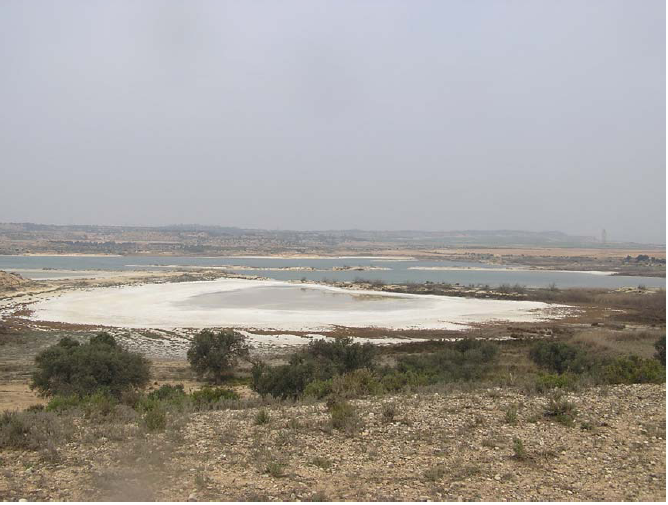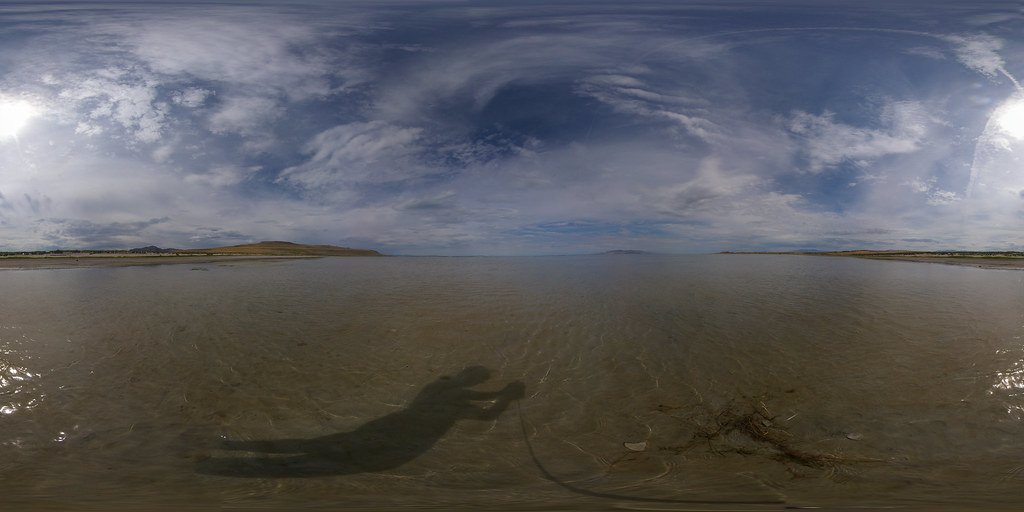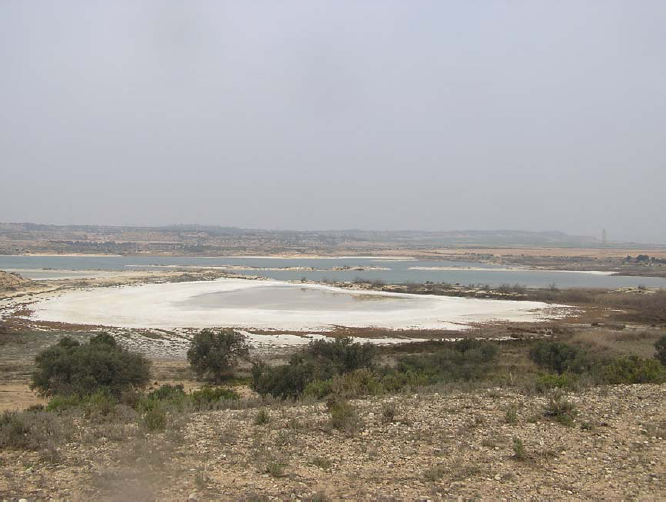Imagine a place where shimmering salt flats meet a volcanic crater, where the air is thick with history and the ground is considered holy by generations of Indigenous people. Now, picture this mystical landscape under the shadow of looming coal mining operations. The Zuni Salt Lake, hidden in the rugged heart of New Mexico, is more than just a geological wonder—it is a living, breathing symbol of cultural survival and ecological harmony. Yet, this sacred site faces an uncertain future, as the relentless push for coal threatens to unbalance centuries of spiritual tradition and natural beauty.
The Geological Marvel of Zuni Salt Lake

Zuni Salt Lake is not your ordinary body of water. Nestled atop an ancient volcanic maar, it forms a shallow, saline basin that has dazzled geologists for decades. The crater, formed by a violent eruption thousands of years ago, collects rainwater and groundwater, creating a unique saline ecosystem. In the dry seasons, the lake’s surface shimmers with a crust of salt, a mesmerizing sight that almost looks otherworldly. This unusual combination of volcanic geology and saline hydrology attracts scientists and nature enthusiasts alike, offering a living laboratory for understanding Earth’s dynamic processes. The minerals and salts found here are the result of slow, natural accumulation, making the area a rare and fragile feature in the American Southwest. The lake’s stark beauty stands as a testament to the power and artistry of geological forces.
A Sacred Landscape for the Zuni People

For the Zuni people, this lake is far more than a striking natural formation—it is a living sacred space. For centuries, Zuni pilgrims have journeyed to the lake to collect salt during ceremonial pilgrimages, believing the crystals connect them with their ancestors and spiritual guardians. The salt itself is revered as “Mother Salt,” a spiritual entity essential for Zuni rituals, healing, and communal well-being. The pilgrimage to the lake involves traditional prayers, offerings, and rituals that reinforce community bonds and cultural identity. Every grain of salt harvested is treated with respect, handed down through families as a blessing. The spiritual significance of Zuni Salt Lake cannot be overstated; it is woven into the very fabric of Zuni life, guiding moral values and sustaining traditions that have endured for generations.
The Ecological Importance of the Lake

Zuni Salt Lake is an ecological treasure trove, home to a mosaic of life forms adapted to harsh, saline conditions. Rare plants such as saltbush and pickleweed thrive along the shore, providing shelter and food for insects and birds. Migratory waterfowl pause at the lake during long journeys, relying on its resources for survival. Amphibians and reptiles, often overlooked, play crucial roles in this delicate food web. The lake also supports unique microorganisms that contribute to nutrient cycling in the salty waters. This fragile ecosystem is highly sensitive to changes in water chemistry and hydrology, making it vulnerable to even minor disturbances. The loss or contamination of this habitat would echo up and down the food chain, affecting species diversity and ecosystem stability in ways that might never be fully reversed.
Coal Mining: A Looming Threat

In recent years, coal mining interests have cast a long shadow over the Zuni Salt Lake and its surroundings. Companies are eyeing the region’s vast coal reserves, eager to extract fossil fuels just miles from the sacred site. The prospect of blasting, drilling, and hauling coal threatens not only the serenity of the landscape but also the delicate balance of water and minerals that sustain the lake’s ecosystem. Mining operations could lower water tables or introduce toxic runoff, altering the lake’s chemistry irreversibly. The noise, dust, and infrastructure associated with coal extraction would disrupt not only wildlife but also the spiritual atmosphere cherished by the Zuni. The threat is not abstract; it is immediate, with environmental reviews and permit applications already triggering concern among local communities and conservationists alike.
Cultural Erosion: Beyond Environmental Impact

The danger from coal mining is not limited to environmental degradation. At its heart, the threat is cultural erosion—the unraveling of traditions, knowledge, and sacred practices. If the landscape is altered, the Zuni pilgrimage could become impossible, severing a vital spiritual lifeline. Salt gathering rituals, passed down for centuries, risk fading into memory as access to the lake becomes restricted or the resource itself is tainted. The psychological impact on the Zuni community is profound; losing a sacred space is akin to losing a part of one’s identity. The lake is central to oral histories, songs, and communal ceremonies, all of which would suffer if mining proceeds. This erosion of culture is not easily measured by scientific instruments, but its effects would echo for generations.
The Science of Environmental Risk

Environmental scientists warn that mining near saline lakes like Zuni Salt Lake can have far-reaching consequences. Disturbance of the land can change groundwater flow, reducing the amount of fresh water feeding the lake. Toxic chemicals used in mining or released by disturbed soils can seep into the basin, contaminating salt deposits and harming aquatic life. Studies from similar sites show that once contaminated, saline lakes are extremely difficult to restore. Dust from mining can also spread heavy metals and particulates over large areas, affecting air quality and plant health. Scientists stress the importance of preserving buffer zones around sensitive habitats to protect them from industrial impacts. The risks are not hypothetical—they are grounded in decades of research across the Southwest and beyond.
Legal Protections and Their Limits

While Zuni Salt Lake is recognized as culturally and environmentally significant, legal protections are complex and often insufficient. The area is designated as a Traditional Cultural Property, which offers some safeguards against development. However, overlapping land ownership, federal and state regulations, and mining interests make enforcement challenging. Legal battles can drag on for years, while mining companies exploit loopholes or lobby for relaxed regulations. The Zuni tribe and their allies must navigate a maze of bureaucracy to defend their sacred site. Laws designed to protect Native American heritage often fall short when pitted against powerful industrial interests. The fight for Zuni Salt Lake is as much about legal strategy as it is about cultural survival.
Community Activism and Resistance

In the face of these threats, the Zuni people and their supporters are not standing idle. Grassroots movements have sprung up, uniting tribal leaders, environmentalists, and concerned citizens. Petition drives, public protests, and cultural awareness campaigns aim to educate the public and pressure officials to halt mining projects. Elders share stories and wisdom at community gatherings, inspiring younger generations to take up the cause. Art, music, and film are used to bring the story of Zuni Salt Lake into the spotlight, giving voice to those often overlooked. Through unity and resilience, the community demonstrates that this sacred landscape is worth defending at all costs.
Scientific Collaboration and Indigenous Knowledge

A promising development in the fight to protect Zuni Salt Lake is the collaboration between scientists and Indigenous knowledge keepers. Researchers now recognize the value of traditional ecological knowledge, which offers insights into the lake’s seasonal rhythms, water sources, and plant communities. By combining scientific data with centuries of observational wisdom, teams are able to paint a more complete picture of what is at stake. This partnership also helps bridge cultural divides, fostering mutual respect and shared goals. Innovative approaches to conservation, such as community-led monitoring, are emerging as powerful tools to safeguard the lake’s future. The fusion of science and tradition proves that solutions are possible when all voices are heard.
What the Future Holds for Zuni Salt Lake
The fate of Zuni Salt Lake hangs in the balance, caught between the forces of industrial development and the will to preserve a sacred heritage. The coming months and years will be critical, as decisions are made in courtrooms, boardrooms, and community meetings. The outcome will shape not only the landscape but also the future of cultural identity and ecological resilience in the region. The lake’s shimmering salt crust and tranquil beauty are reminders of what is at stake. The voices calling for protection grow stronger every day, echoing the ancient prayers that have echoed across this land for centuries. What will the next chapter in the story of Zuni Salt Lake be?



